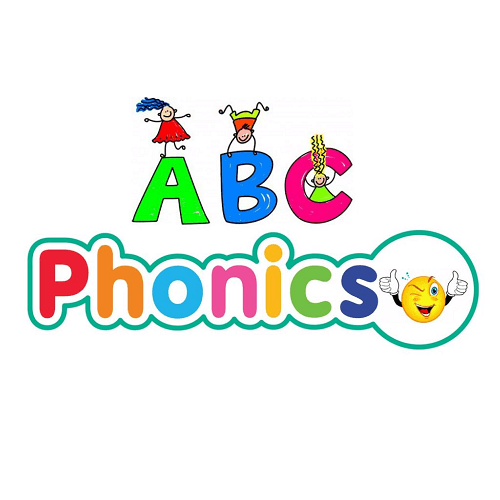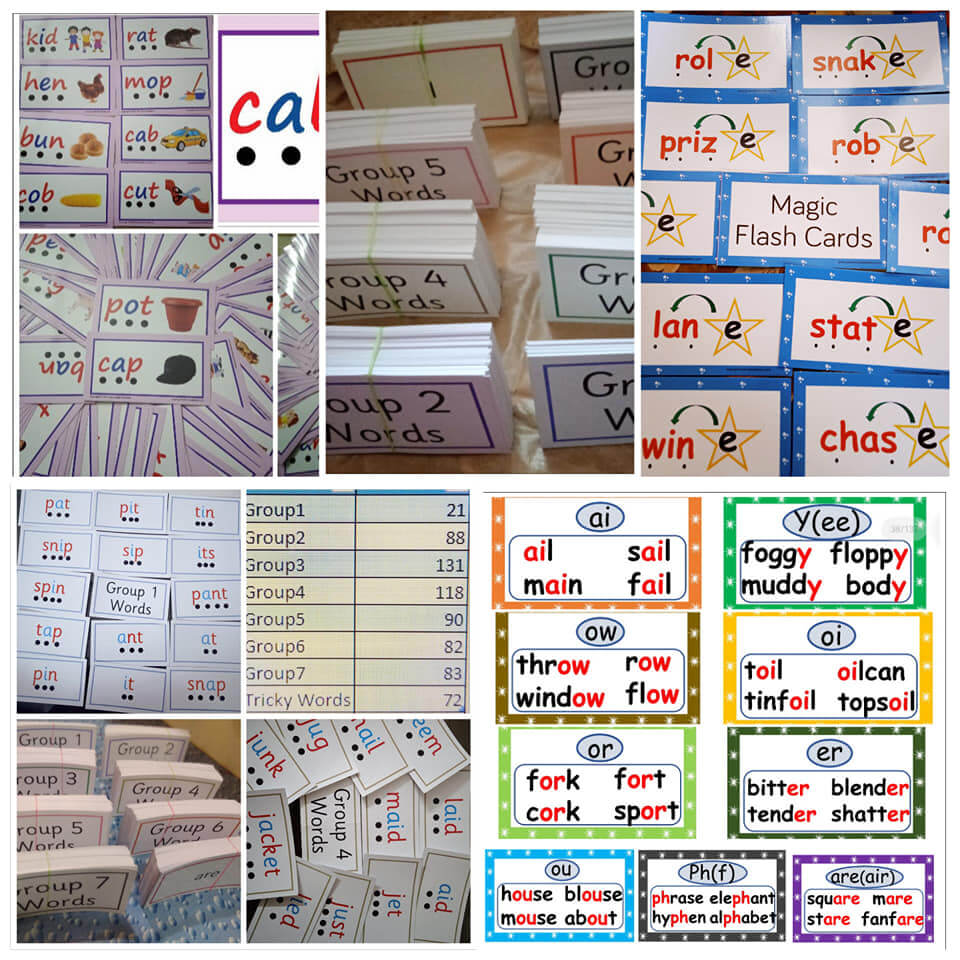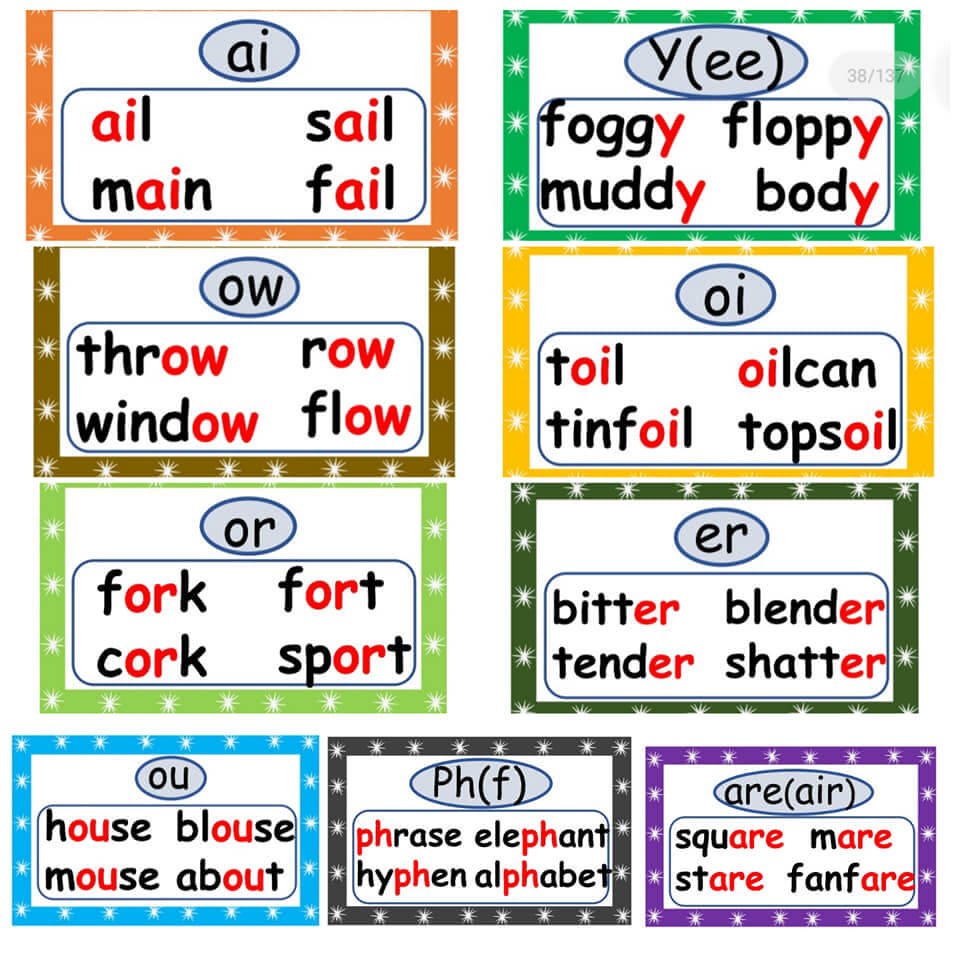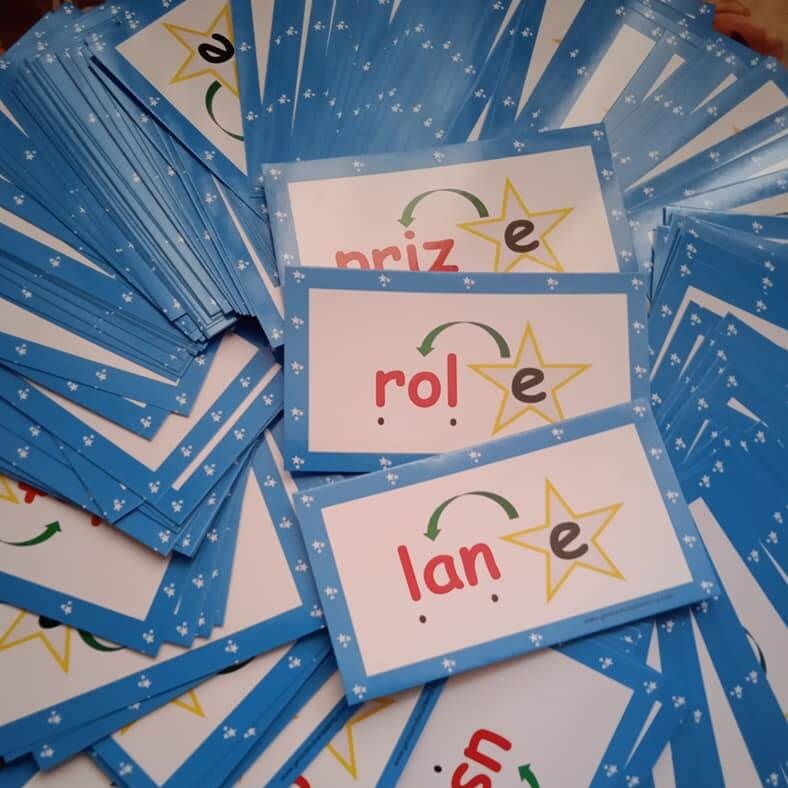PHONICS AND GRAMMAR


Phonics is the method of teaching children how to read. Children are taught how to "sound out" new words.

Five skills taught in Phonics manual
1. Learning the letter sounds
Children are taught the 42 main letter sounds. This includes alphabet sounds as well as disgraphs such as sh, th, ai and ue.
2. Learning letter information
Using different multi-sensory methods, children learn how to form and write the letters.
3. Blending
Children are taught how to blend the sounds together to read and write new words.
4. Identifying the sounds in words (Segmenting)
Listening for the sounds in the words gives children the best start for improving spelling.
5. Tricky words
Tricky words have irregular spellings and children read them separately. The best way to teach phonics is systematically. This means moving children through a planned sequence of skills rather than teaching the particular aspects of phonics as they are encountered in texts. Systematic instruction can focus on synthetic phonics(decoding words by translating letters into sounds and then blending them),analytic phonics(identifying whole words then parsing out letter-sound connections),analogy phonics(using familiar parts of words to discover new words),phonics through spelling(using sound-letter connections to write words)and/or phonics in context(combining sound-letter connections with context clues to decode new words).Regardless of the specific method used what is most important in systematic instruction is that there is a deliberate and sequential focus on building and using the relationship between sounds and letter symbols to help readers decode new words.
6.Digraphs and Trigraphs words
A digraph is two letters (two vowels or two consonants or a vowel and a consonant) which together make one sound. A trigraph is a single sound that is represented by three letters, at the end make only one sound.
7.Assessing and Evaluation
a) Phonological and phonemic awareness. The skills of syllabification, rhyme recognition
b) Letter-sound correspondence. To assess letter-sound correspondences
c) Blending of sounds. Ability to orally blend sounds is included in many phonological awareness
d) Segmenting of words. Oral segmentation
Age group: 4.5-6 years






